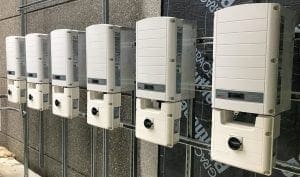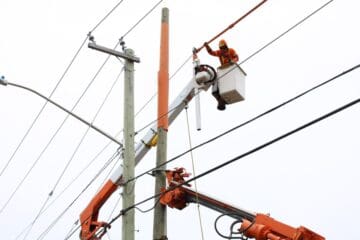Younger generations value sustainability in their products: 5 ways to achieve a meaningful sustainable impact
As major shifts are happening on several different fronts, the manufacturing industry faces a current era of opportunity and change. Remember the pictures of cleaner urban air in cities across the world during COVID? Those images should stick with us as we eventually move forward out of this era and embrace smarter solutions while scaling up to previous pandemic levels.
One major opportunity, and presence by default, is a movement towards a more sustainable business model. Not just in practice but also in purpose. Here are 5 meaningful ways to become a more sustainable manufacturing brand:
- A switch to a more localized production model. The most recent hiccups (well, actually more like unprecedented logistical nightmares) in supply chain have exposed glaring problems with the way complex logistics models have exacerbated the problematic COVID economy. Here are some current examples:
- The Los Angeles port at this moment, has more gridlock than the I-5 (their notoriously congested highway). 146 vessels are crowding the ports or waiting to get in; 88 are waiting in the Pacific either in anchor or in drift. Have a product you ordered a while ago that keeps getting delayed? Chances are it’s soaking up the rays on an extended cruise off the coast of sunny CA.
- Port authorities had to shut down the Port of Yantian (one of the busiest seaports in the world) for two weeks due to a COVID outbreak, causing a complete bottle neck for freight that usually hustles in & out of the southern Chinese district.
- And who could forget the infamous Suez Canal incident from March of 2021, when a vessel was stuck for six days and seven hours, froze $10B in trade per day, and caused a traffic jam of over 300 vessels. Wonder if that carrier had some open positions posted within hours of that debacle getting sorted out.
In short, the need for change in a complicated production-to-consumer system will bring about a more localized approach. According to Forbes the current uncertainty with tariffs and trade disagreements will speed this new “farm-to-table”-like shift exponentially, bringing production closer to the consumer. These may be arduous shifts for the manufacturing industry in the short term, but in the long term reduced red tape, increased structural resiliency and a shorter production-to-customer turn around time will only enhance the all-important growing trend of positive customer experience. What does this mean for sustainability? A drastic cut in emissions from industrial transport which account for about 30% of the total global transportation-related emissions.
Photo credit: AP News
2. A re-evaluation of fossil fuel usage. A 2019 EPA report showed that an astounding 23% of greenhouse gas emissions were emitted by the industrial sector. These emissions mainly come from two different sources within the industry:
- Fossil fuel usage for energy
- Chemical reactions that occur during the production of goods
Cutting down on GHGs will not only help the planet, but will give a competitive edge to manufacturers making the switch to clean energy sourcing. Why? 66% of millennials say they are very concerned about the environment, and that they are willing to pay more for products made by sustainable companies. This should be a canary in the coal mine (to use a dirty energy analogy) that in order to stay ahead of the competition, manufacturing companies will have to become sustainable brands: not just appending sustainability as an after-thought, but positioning it as a central part of brand philosophy, mission and corporate practice.
Switching all manufacturing facility operations to clean energy like community solar, wind energy sourcing through the utility, or leasing/purchasing solar are huge first steps towards greening any manufacturing business, and all are monetarily incentivized options.
3. Chemical use reduction. With so much attention on carbon emissions and climate change, it seems that not enough environmental attention is on industrial chemical usage. An abundance of products & processes utilize chemical toxins- including basically anything plastic. The EPA has an overwhelming number of resources that do a deep dive into industrial chemical waste, how we have so much of it, and where it’s going. They also have a “Lean” method they have made available to the public to help reduce the amount of unnecessary chemical waste generated by the industrial sector. Some companies have begun taking steps to eliminate or reduce harmful chemicals in their manufacturing process and thereby their products. Hewlitt-Packard, for example, eliminated PVC from their power cords. Lockheed Martin’s Virginia plant has used the EPA’s “Lean” methods to reduce their needed chemical storage space from over 60,000 square feet to just 1,200 square feet. More recently research has incorporated out-of-the-box thinking in greening both processes and products, like using hot water and high pressure as replacements for solvents and toxic chemicals.
66% of millennials say they are very concerned about the environment, and that they are willing to pay more for products made by sustainable companies
4. Ok let’s get out of the weeds and suggest an easy one: Recyclable Products & Compostable Packaging. Yes, everyone has heard that they should recycle in their home or business but what if industry really started recycling on a massive scale and in a meaningful way? In 2014, Dell computers started a closed-loop recycling program that takes old electronics (one of the biggest toxin emitters) and making new Dell products out of them. To date, over 10,000 metric tons of closed-loop recycled plastics have been remade into new products and by 2025, Dell is aiming to utilize 80 metric tons of ocean plastics in its packaging materials annually.
To take this up to another level- sustainable packaging that can be composted or utilized by the ecosystem is a future path we need to choose. Take, for example, a company like Elevate Packaging which produces and sells compostable labels, mailing packages & cello bags. Or (a personal favorite) Saltwater Brewery‘s edible six pack rings made of barley and wheat ribbons so it can be safely eaten by animals, including sea creatures, if it ends up in the ocean after use.
Photo credit: Saltwater Brewery
5. Get an energy audit in order to deploy energy-efficient practices.
The Regional Manufacturing Institute of Maryland (RMI), for example, will provide free energy audits for participating manufacturing companies. The audit results are used to utilize two programs provided in partnership with the Maryland Energy Administration. The first is ENERGY EDGE (available in the Pepco & Delmarva service areas) which helps manufacturers identify and implement energy reduction opportunities that will cut overhead costs. The program also helps with funding for the upgrades. The second is called MDMAP (The Manufacturing Disruption Mitigation Assistance Program) and was put in motion as a result of COVID-19. It helps manufacturers identify air flow, ventilation and filtration solutions to ensure a safe workplace and reduce the risk of possible spread in facilities. “We assist manufacturing companies across Maryland by offering a free efficiency assessment. We then help them implement measures that lower overhead costs, sometimes drastically. It’s a win-win for any company that participates,” says Daki Venetoulis, the Energy Program Manager at RMI. Programs like these can give a jump start to any manufacturing company setting sustainability goals, enhancing their brand ecosystem, and reducing the facility’s costs. (To get started, contact Daki Venetoulis at (410) 941 9042 or daki@rmiofmaryland.com)
Photo credit: Cleyder Duque (@Pexels)






